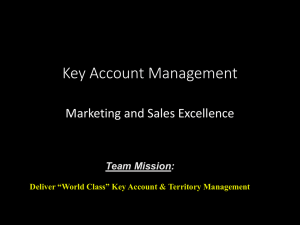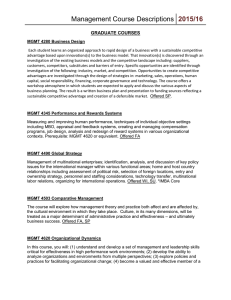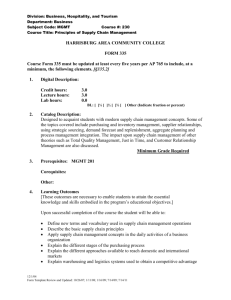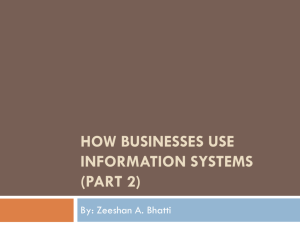Group-D-Invasive-Spe.. - Western Forestry and Conservation
advertisement
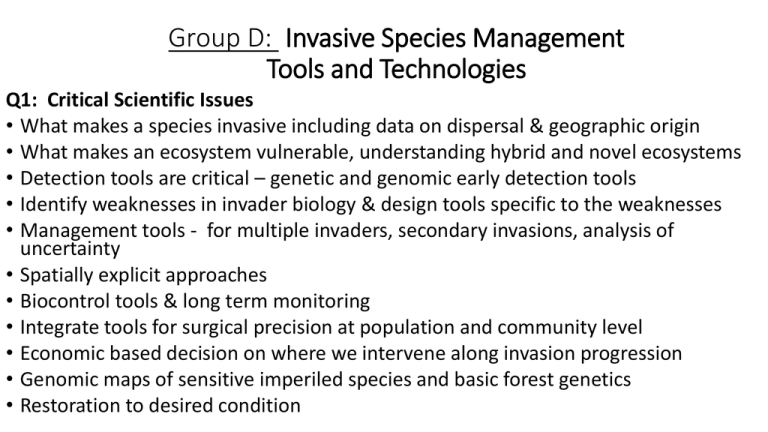
Group D: Invasive Species Management Tools and Technologies Q1: Critical Scientific Issues • What makes a species invasive including data on dispersal & geographic origin • What makes an ecosystem vulnerable, understanding hybrid and novel ecosystems • Detection tools are critical – genetic and genomic early detection tools • Identify weaknesses in invader biology & design tools specific to the weaknesses • Management tools - for multiple invaders, secondary invasions, analysis of uncertainty • Spatially explicit approaches • Biocontrol tools & long term monitoring • Integrate tools for surgical precision at population and community level • Economic based decision on where we intervene along invasion progression • Genomic maps of sensitive imperiled species and basic forest genetics • Restoration to desired condition Group D: Invasive Species Management Tools and Technologies Q2: Critical Management and Policy Issues • Maximize risk assessment/map use for prevention, mgmt, restoration • Science delivery to managers on ground, Bottom up suggestions for mgmt tools • Post-treatment evaluation of mgmt • Surveillance for multiple invasive species • Geographic based mgmt decisions • Safety of biocontrol agents • Import and regulatory policies (domestic & international), Greater authority forpol icies (e.g., Lacey Act) • Cost effectiveness of different strategies • Improve cross-agency collaboration • Stakeholder engagement for concensus actions • Shift some responsibility to exporter • Funding for long term monitoring Group D: Invasive Species Management Tools and Technologies Q3: Scientific Data, Models Available to Inform This Topic • Data – fish including mgmt and policy info - Plants USDA plant databas - EDD maps & Global IS Info network - FIA - living atlas - ArcGIS • Concepts/Theories – Pop biology, succession, resilience • IPM Systems – SOD info/data/mgmt tool website - STS, SLAM, Melaleuca, Island examples wildlife • Models – Rangeland and Forest Vegetation simulators - epidemiological - disease models Group D: Invasive Species Management Tools and Technologies Q4: Issues Likely to Become Important by 2040 • Technology – drones, computer capacity, apps, remote sensing • Climate change – bioenergy, emerging pests, • Funding and partners – private sector/corporate, philanthropists, associations • Genetic engineering - pest weakness, transgenic plants • Mgmt – patch mgmt in invaded landsape, scenario driven tools, resilient ecosystems • Future economic conditions – trade, transportation, recreation, pathways • Increase collaboration – mgmt across jursidictions, international, citizen science, technical assistance to states and tribal groups Group D: Invasive Species Management Tools and Technologies Q5: How This Topic can Potentially Connect With Other Topics • Impacts on Communities/Landscapes – impacts drive mgmt decisions • Impacts on Ecosystem Processes- mgmt affects impacts on ecosystem & vice versa, sensor networks will become more important • Interactions with other stressors – climate change impacts pest populations and need for mgmt • Change the Culture – increasing use of citizen science • Economic – affects invasions and management strategies and priorities Group D: Invasive Species Management Tools and Technologies Q6: What are the Gaps in Knowledge and Current Research • Weed Risk assessment databases • Centralized web-based storehouse, data coordination • Connections of IS impacts/effects on human health (funding NIH) • Etiology epidemiology of emerging disease complexes • Non-target effects of mgmt and secondary invasions • Restoring infrastructure for species restoration • Decline in science support $, capacity, skills lost thru retirement • Post treatment monitoring and efficacy • Use of transgenics as tool vs solution • Per capita effect of biocontrol and mgmt on invasives
